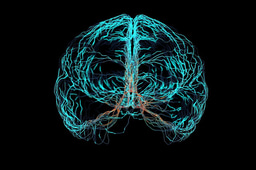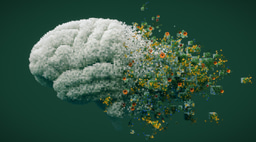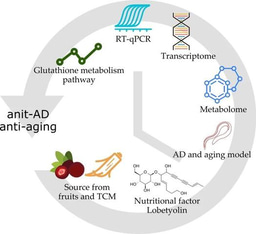Rare Disease Day 2025 - Q&A with Dr Sham Samthanam
Published in General & Internal Medicine and Immunology

.jpg) Dr Sham Santhanam, MD, DM, MRCP (UK), FRCP (Edin.), SCE (RCP UK), serves as an Associate Editor for Rheumatology (Oxford) and the Indian Journal of Rheumatology. He is also the Associate Education Editor for the Journal of the Royal College of Physicians of Edinburgh and an Academic Editor for PLoS One. Additionally, he is on the editorial boards of Rheumatology Advances in Practice and Rheumatology and Therapy. Dr. Santhanam is a Senior Consultant Rheumatologist at Kauvery Hospitals in Chennai, India. He is coauthor of Rarer Arthopathies- Rarer Arthropathies | SpringerLink, part of the book series: Rare Diseases of the Immune System (RDIS). His current research interests include systemic lupus erythematosus (SLE), vasculitis, and interstitial lung disease.
Dr Sham Santhanam, MD, DM, MRCP (UK), FRCP (Edin.), SCE (RCP UK), serves as an Associate Editor for Rheumatology (Oxford) and the Indian Journal of Rheumatology. He is also the Associate Education Editor for the Journal of the Royal College of Physicians of Edinburgh and an Academic Editor for PLoS One. Additionally, he is on the editorial boards of Rheumatology Advances in Practice and Rheumatology and Therapy. Dr. Santhanam is a Senior Consultant Rheumatologist at Kauvery Hospitals in Chennai, India. He is coauthor of Rarer Arthopathies- Rarer Arthropathies | SpringerLink, part of the book series: Rare Diseases of the Immune System (RDIS). His current research interests include systemic lupus erythematosus (SLE), vasculitis, and interstitial lung disease.
How do you approach and gain insights from the diagnosis and treatment of rare diseases?
Diagnosing and treating rare diseases requires a thorough patient-centred approach that prioritizes early diagnosis, personalized care and treatment, interdisciplinary management, patient education, and awareness while emphasizing these conditions' emotional and social impacts on patients and their families.
Managing these diseases has always been challenging due to their rarity and unique presentation. Unless we, as treating physicians, are aware of these diseases, they may be easily overlooked. After diagnosis, helping the patient understand the nature of the illness and its treatment is even more important and challenging.
How do collaborations and networks advance research and improve outcomes in rare diseases, and what are your hopes for future progress?
Due to their rarity, these diseases require pooling expertise and knowledge from various disciplines. Thus, collaboration is key to better management of these diseases. It particularly aids in resource sharing for studies and maintaining registries worldwide. Given the small number of patients, collaboration across various centres is essential to obtain sufficient study participants. Collaboration must be achieved between academic institutions, government bodies, and funding agencies, including pharmaceutical companies. All these activities should prioritize patient-centered approaches, ensuring patient involvement wherever possible. Finally, the results of research activities must be shared globally and made accessible through open-access platforms.
The hope for the future is to “cure a few of the diseases!"
With technological advances and the introduction of artificial intelligence, early diagnosis is essential, and resources should be accessible to everyone. We focus on targeted therapy and personalized medicine for many autoimmune and oncological diseases. Multi-centre international collaboration is crucial for rare diseases, and the government and funding agencies must allocate more funds. Policy reforms are vital, particularly in covering these diseases under health insurance. Additionally, empowering patients through education, support groups, and more resources is essential for them to connect globally.
What are your views about global awareness of rare diseases?
Yes, I agree that among the various Sustainable Development Goals SDG3 target(s) and indicators, Target 3d is the closest to reality as it emphasizes collaboration between governments, non-governmental organizations, and the private sector in health care management. It will also help enhance surveillance systems for early disease detection, better prepare for health-related situations, and provide an equitable health framework so that all countries, including developing nations, have adequate resources for managing these diseases.
How would you teach rare disease management and raise awareness among future healthcare professionals?
Incorporating the management of rare diseases into the medical curriculum is essential, as it aids healthcare professionals in managing these diseases more effectively in the future. Additionally, there should be an emphasis on interdisciplinary teaching and clinical exposure through rotations in immunology/rheumatology, dermatology, and neurology departments. Undergraduates can be paired with mentors who specialize in these rare diseases. Students should also be introduced to genetics and genomics for diagnosis and precision medicine. Frequent continuing medical education (CME) sessions, workshops, and conferences should be organized to enhance healthcare awareness. Furthermore, students and other clinicians should be educated on managing these diseases in resource-limited settings. There should also be programs for education about patient advocacy, health policy, and ethical/legal issues.
What message would you share about the significance of addressing rare diseases, and how can individuals raise awareness and support those affected?
Rare diseases are more common than we think. Although the prevalence of individual diseases may be lower, they collectively account for a significant number. Therefore, creating enough awareness among healthcare professionals and the public is crucial for early diagnosis and better outcomes. Patient advocacy and empowerment play an essential role in managing these rare diseases. Ample services should be available to provide mental health support to these patients. Similarly, collaborative research is essential, given the relatively small number of patients. We must continuously indulge in activities to increase public awareness through media and by recognising awareness days.
For a selection of journal articles, collections, ISRCTN clinical study registrations and blog posts chosen by our publishers on rare diseases, check out our highlights campaign.






Please sign in or register for FREE
If you are a registered user on Research Communities by Springer Nature, please sign in